This post may contain affiliate links. Please read my privacy policy.
I love making these crispy lumpia, or Filipino spring rolls, filled with ground pork and vegetables. They’re always a hit at parties and family gatherings! I like serving them with a sweet and sour dipping sauce as an appetizer or pairing them with steamed rice for a quick and delicious meal.
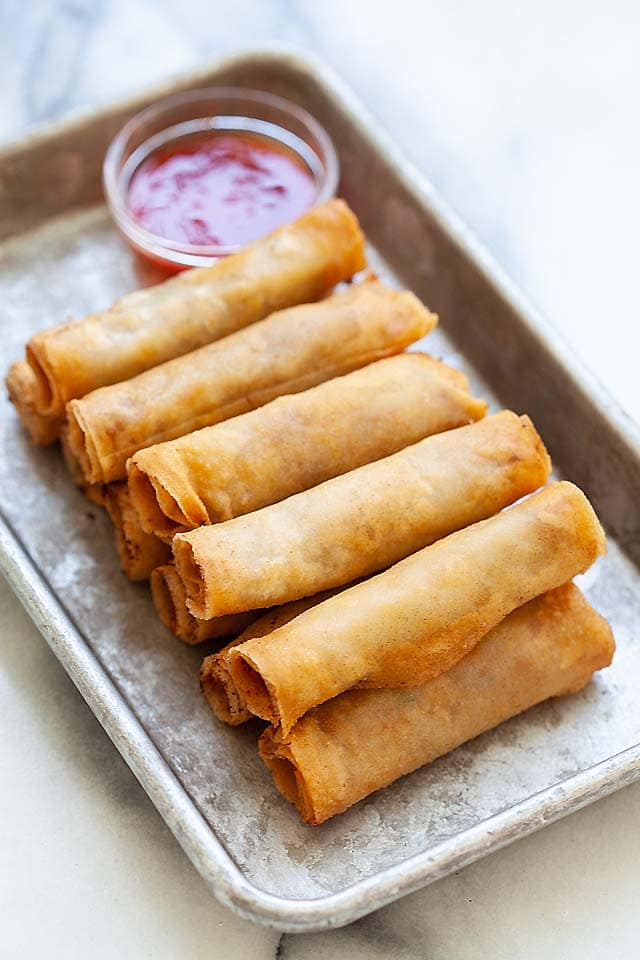
Table of Contents
The Best Lumpia Recipe
Almost every country in Asia has its own take on spring rolls, known as egg rolls in the U.S. In the Philippines, we call them lumpia, or lumpiang Shanghai.
Aside from Vietnamese spring rolls, this pork lumpia recipe is one of my favorite go-to appetizers to whip up quickly. It’s super simple—just four main ingredients, seasoned with soy sauce and ground black pepper.
What makes this the ultimate recipe? It was created by Marvin Gapultos, a bestselling Filipino cookbook author. It’s foolproof, beginner-friendly, and always a crowd favorite. With over 300 glowing reviews, it’s definitely a recipe worth trying! Don’t forget to check out my step-by-step video and tips below to make sure it turns out perfect every time!
For an air fryer version, check out my Air Fryer Lumpia recipe!
My first time making spring rolls. To me this recipe was so easy to prepare and SO delicious!
– Lin
What Is Lumpia
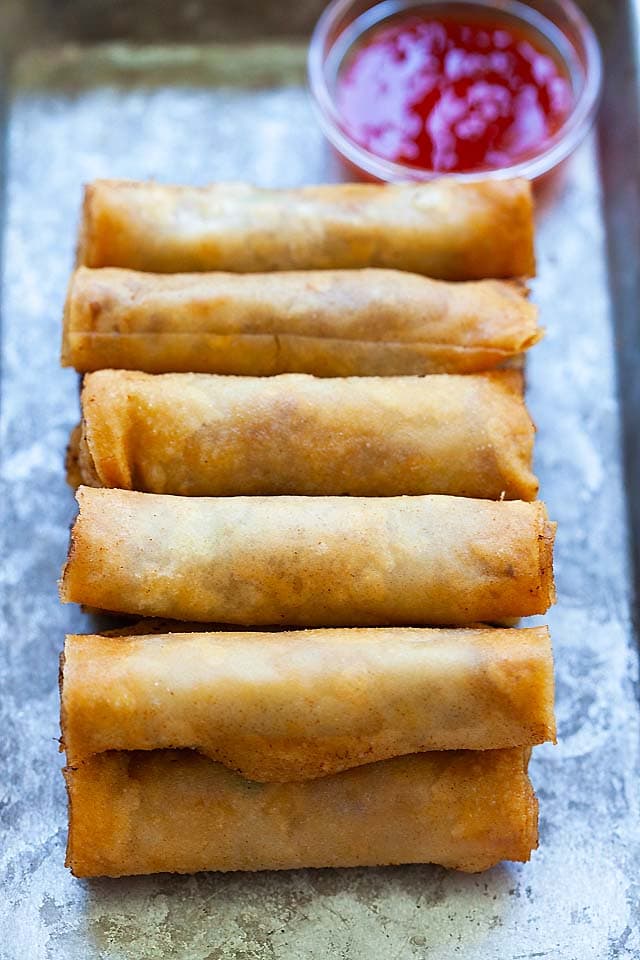
Lumpia, or Filipino spring rolls, are a beloved Filipino food that can be served as an appetizer, snack, or even as a main dish at restaurants and fast food spots like Jollibee. These crispy rolls are made by wrapping a thin, crepe-like wrapper around a savory filling of meat and vegetables.
The protein used for the filling can vary from pork, chicken, beef, shrimp, or even tofu, but pork is the most common. Vegetables like carrots, cabbage, and green onions add texture, flavor, and a healthy boost.
Like many Filipino dishes, lumpia has Chinese influences, particularly the Chinese spring roll or egg roll. While they’re not exactly the same, they share similar ingredients, rolling methods, and cooking techniques—hence the name lumpiang Shanghai!
Another iconic Filipino dish you need to try is shrimp sinigang!
Different Types Of Lumpia
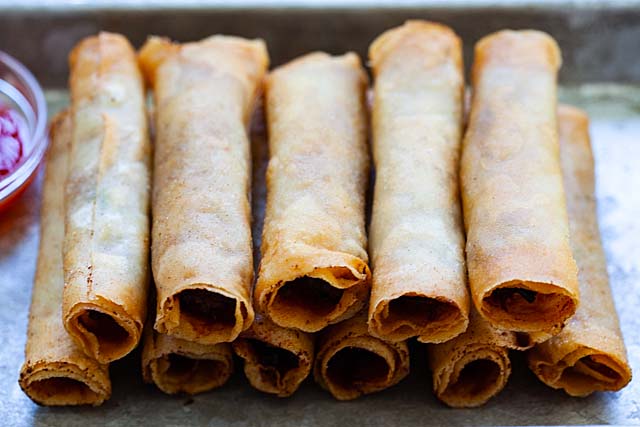
In the Philippines, there are two main types of spring rolls, depending on how they’re cooked: fresh or fried.
Fresh lumpia is served uncooked, usually chilled, and drizzled with a sweet peanut sauce. It’s filled with vegetables like bean sprouts, carrots, and cabbage, and sometimes has shrimp or tofu thrown in. It’s a lighter, healthier option compared to the fried kind, making it a great snack or even a salad. If you’ve tried Summer Rolls or Vietnamese Fresh Spring Rolls, you’ll recognize the vibe.
Then there’s fried lumpia, the more popular version, where the filled wrapper is deep-fried until crispy and golden brown. These are typically served as an appetizer or paired with steamed rice or fried noodles (pansit). And during special occasions or celebrations, you’ll almost always find a big platter of fried lumpia on the table. I mean, who can resist that crispy crunch?
Here are some of the different types of lumpia you can find in the Philippines:
- Lumpiang Sariwa – This is the “fresh” lumpia, usually filled with veggies and meat, all wrapped in a thin, crepe-like wrapper made with eggs and flour.
- Lumpiang Hubad – Translated as “naked” lumpia, this version doesn’t have a wrapper at all. It’s just the tasty filling on its own.
- Lumpiang Ubod – Another type of fresh spring roll, but with a unique twist. It’s filled with ubod, or heart of palm, which comes from the core of palm trees.
- Lumpiang Shanghai (or Prito) – This is the most popular lumpia, and the one we’re making in this recipe. It’s the classic fried version filled with meat and veggies.
- Lumpiang Togue – This one’s a fried lumpia with bean sprouts as the main filling. It’s usually larger than lumpiang shanghai and served with a garlic-vinegar dipping sauce.
Ingredients You’ll Need
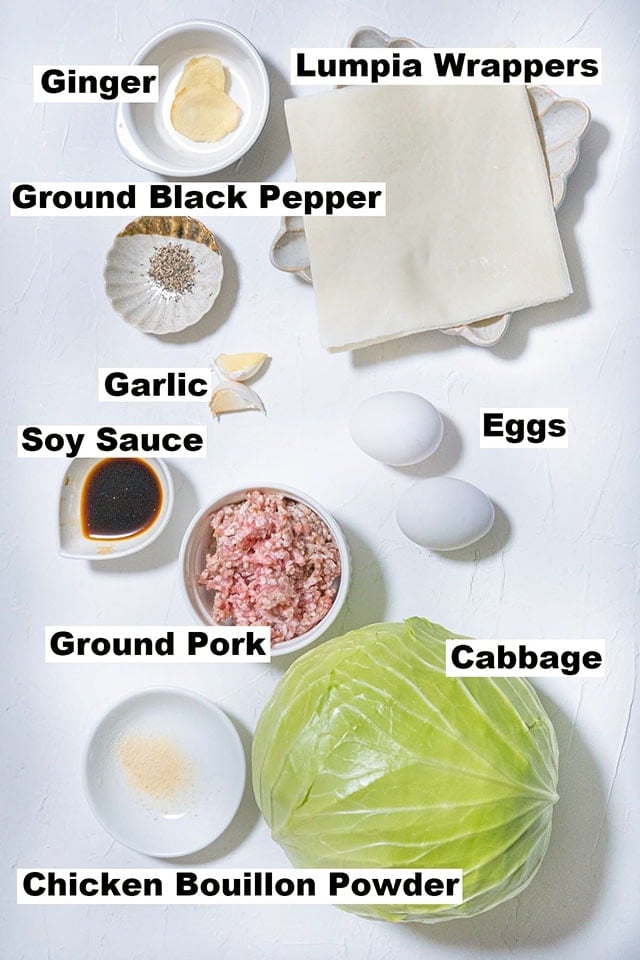
- ground pork – can be substituted with ground beef or even turkey. I love using pork though because it has a good balance of flavor and texture.
- vegetables – I only used cabbage in this recipe, but feel free to add carrots and green onions for more color, texture, and flavor.
- lumpia wrappers – these are made with flour and water and they give the spring rolls their crispy texture when fried. If you can’t get any, you can use Chinese or Vietnamese spring roll wrappers meant for frying instead.
- soy sauce – adds a savory depth of flavor to the filling. You can also put some chicken bouillon powder for added umami, but it’s optional.
- eggs – helps bind the filling together for easier handling.
Please refer to the recipe card at the bottom of this post for full details on each ingredient.
Dipping Sauces For Lumpia
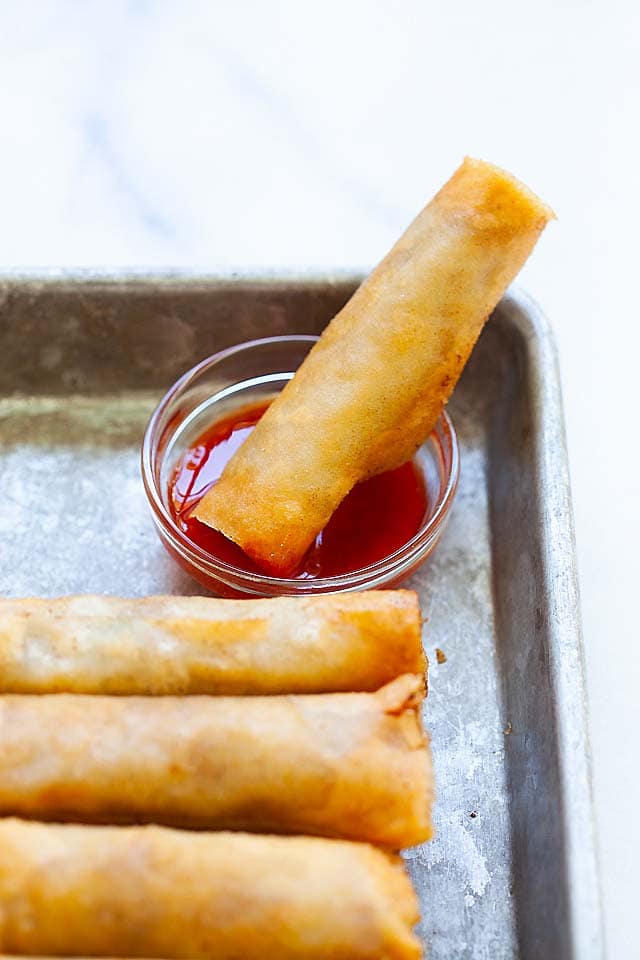
Lumpia is amazing on its own, but it’s even better when paired with a dipping sauce. The most popular one is a sweet and sour sauce, made with vinegar, sugar, ketchup, cornstarch, and a hint of chili for that extra kick.
This sauce is my go-to because the sweet and tangy flavors balance out the crispy, savory lumpia so perfectly. I also love using it for other dishes like stir-fries, fried dumplings, and grilled meats!
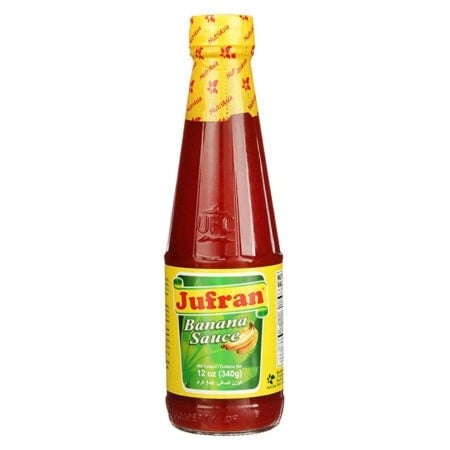
Another go-to dip in every Filipino household is banana ketchup. Unlike regular tomato ketchup, it’s made from mashed bananas, sugar, vinegar, and spices, giving it a sweet, tangy flavor with a little kick. You can find different brands of banana ketchup at Asian markets, with Jufran and UFC being the most popular. It’s the perfect dip for fried spring rolls!
Can’t find banana sauce or sweet and sour sauce? Serve with other dipping sauce like Thai sweet chili sauce or plain soy sauce with fresh calamansi for added flavors!
How To Make Lumpia
Lumpia is a staple in the Philippines and it’s practically part of their culture. I grew up eating a different version of spring rolls, but all the filling, rolling, and frying are familiar to me. We love having fried spring rolls for appetizer, finger food for parties, and even as a main dish for dinner.
And let me tell you, these little homemade Filipino spring rolls are addicting! It’s so easy to pop one after another into your mouth without even realizing how many you’ve eaten. But who’s counting, right?
Here’s how you can make the best lumpia recipe at home:
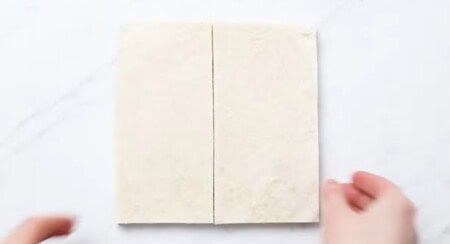
First, grab your square lumpia wrappers and cut them in half with a serrated knife so you have two stacks of rectangular ones. Place a damp paper towel over the wrappers to keep them from drying out while you work.
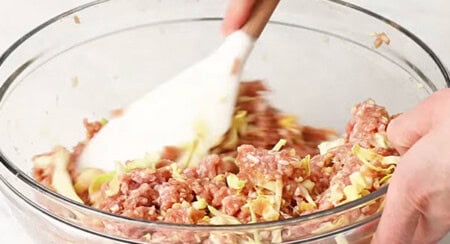
Next, in a big bowl, mix together the pork, cabbage, garlic, ginger, soy sauce, chicken bouillon powder (if you’re using it), eggs, and ground black pepper. Get in there with your hands or a rubber spatula and mix everything really well so the seasonings are evenly distributed.
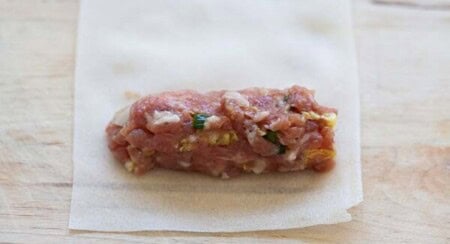
Now, lay one of those rectangular wrappers flat on your work surface with the short edge facing you. Put a heaping teaspoon of the filling in the middle, about half an inch from the edge closest to you. Grab the bottom edge of the wrapper and roll it up over the filling. Keep rolling until you have about 2 inches of wrapper left.
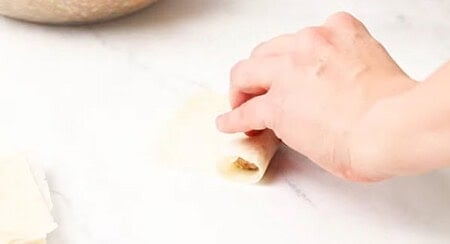
Dip two fingers in a bowl of water and lightly moisten the last 2 inches of the wrapper with water. Finish rolling up the lumpia and lay it seam-side down. Keep going with the rest of the filling and wrappers.
Pro tip: Water usually does the trick to seal the wrappers, but if it’s not sticking, an egg wash works like a charm too.
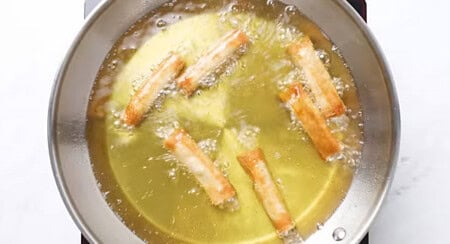
For frying, fill a large frying pan with about 1/2 inch of vegetable oil and heat it over medium-high heat. Gently place the lumpia in the hot oil and fry until golden brown on all sides—about 3 to 5 minutes total. Serve them hot with sweet and sour sauce or banana ketchup.
Pro tip: If you’re using frozen lumpia rolls, they might need an extra 1 to 2 minutes in the oil. Or, you can air fry them at 400°F for 7 to 9 minutes—longer if they’re frozen. They’re so crispy and tasty!
The Secret Ingredient In Lumpia Rolls
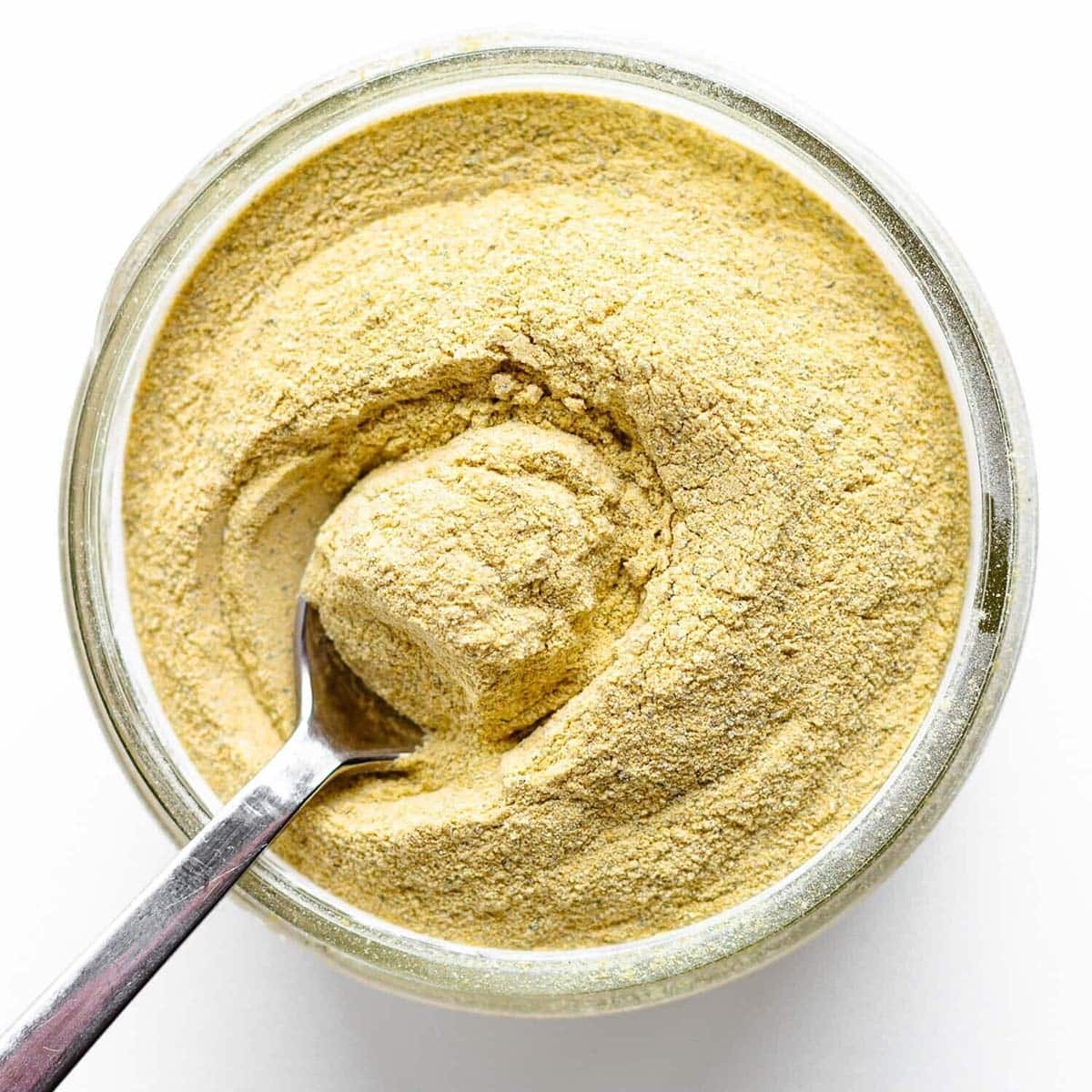
Aside from using fresh, high-quality ingredients, there’s one secret that makes this version stand out. I like adding a bit of chicken bouillon powder to the filling mixture—it gives the filling an instant umami boost that really takes it up a notch.
Chicken bouillon powder is a go-to seasoning for boosting the flavor of dishes. It’s made from dehydrated chicken broth, so it brings a rich, savory taste that’s way more natural than MSG (though some brands do add MSG to their mix).
Shopping Tip: I recommend Knorr brand chicken bouillon powder, especially the no-MSG version. I love adding this powder to my cooking because it adds a depth of flavor that is hard to achieve with just salt. Don’t skip this secret ingredient if you want your lumpia to have that extra oomph!
Helpful Tips For Home Cooks
Here are some essential tips for making lumpia at home:
- I always make sure to thaw the wrappers properly so they don’t tear, and I keep them moist by covering them with a damp cloth while I work. For the filling, I finely chop the cabbage and mix it evenly with the ground pork.
- I like to practice wrapping with a small amount of filling first and use beaten egg to seal the edges, making sure the rolls stay tight during frying.
- When frying, I cook in batches over medium-high heat for that perfect golden crunch, or I bake them at 400°F (200°C) if I want a healthier option.
- For that extra crispy, non-oily texture, the air fryer is my go-to.
- If I’m making a big batch, I freeze the uncooked rolls in a single layer, then store them in freezer bags. When I’m ready to eat, I reheat them in the oven or air fryer to keep them crispy.
Frequently Asked Questions
Traditionally, Filipino lumpia wrappers are made from flour and water. They’re thin and delicate, making them perfect for frying. And they crisp really well!
The best substitution for traditional wrappers is egg roll wrappers—they fry up crispy and give you that same great texture as the original.
You can easily find pre-made lumpia wrappers in most Asian grocery stores or online. If you can’t find them, egg roll or spring roll wrappers are great substitutes. Do not use wonton wrappers as they are not meant for making spring rolls.
Lumpia is the Filipino version of fried spring rolls and it’s typically made with thin, flour-based wrappers. Egg roll, on the other hand, is the American version of Chinese spring rolls and it uses thicker wrappers. They share the same origin, but they taste and look different as lumpia tends to be smaller and more slender than egg rolls.
Lumpia can be wrapped completely to keep the filling sealed inside, which is good for meat and vegetable filling to stay juicy and crispy. Alternatively, they can be open-ended, showing the filling, often for lighter versions or a casual look, giving extra crispiness at the ends.
Absolutely! Air frying is a great way to make Filipino spring rolls with less oil. Just preheat your air fryer to 400°F (200°C), and arrange the spring rolls in a single layer. Cook them for 7 to 9 minutes, making sure not to overcrowd the basket. If you’re using frozen spring rolls, add an extra 1 to 2 minutes to the cook time. A quick spray of oil on the spring rolls before air frying will give them that extra crispy texture we all love!
Yes, you can bake them if you’re looking for a lighter option! Preheat your oven to 375°F (190°C). Arrange the spring rolls in a single layer on a baking sheet, and lightly brush or spray them with oil. Bake for 20 to 25 minutes, flipping halfway through, until they’re golden and crispy. They may not have the same deep-fried crunch, but they’re still super tasty and a healthier way to enjoy these spring rolls!
Yes! Lumpia can be frozen for up to 3 months. Make a big batch of these rolls and store them in freezer-safe bags. The best part? You don’t even need to thaw them before frying!
Trust me, you will have no leftovers! Anyway, to reheat lumpia and keep them crispy, use an oven or air fryer at 350°F (177°C) for 8 minutes. You may also reheat in a skillet or pan, with a little bit of oil until heated through. Avoid using the microwave if you want to maintain crispiness, but it’s fine for quick reheating, for about 10 seconds.
This recipe is 79 calories per roll.
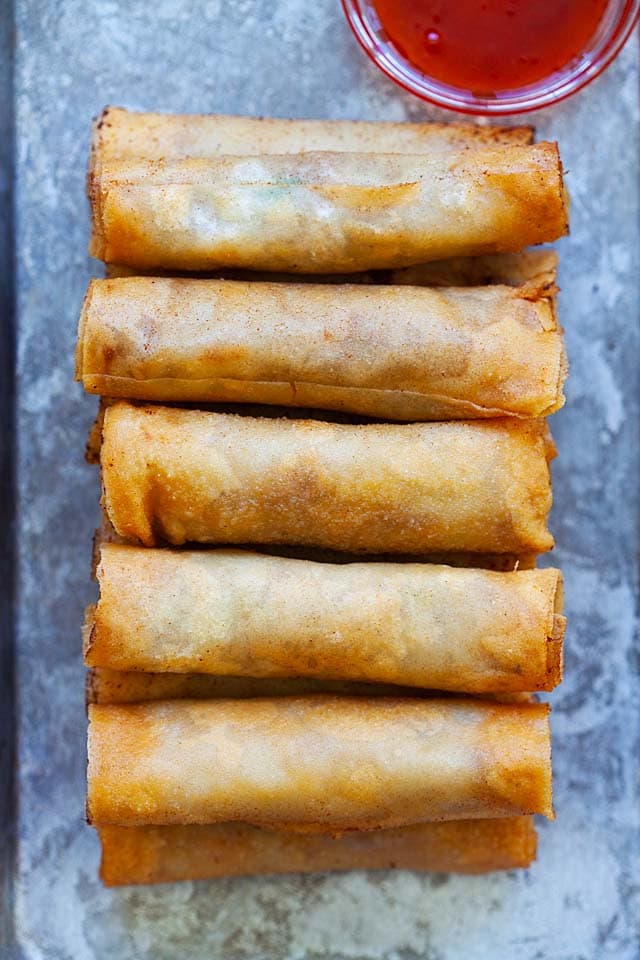
What To Serve With Lumpia
For a classic Filipino meal, I recommend the following recipes:
I hope you enjoy this post as much as I do. If you try my recipe, please leave a comment and consider giving it a 5-star rating. For more easy and delicious recipes, explore my Recipe Index, and stay updated by subscribing to my newsletter and following me on Facebook, Pinterest, and Instagram for new updates.
Other Filipino Recipes You Might Like
- Chicken Adobo
- Filipino Kare Kare (Ox Tail and Peanut Stew)
- Pancit (Filipino Fried Rice Noodles)
- Filipino Chicken Skewers

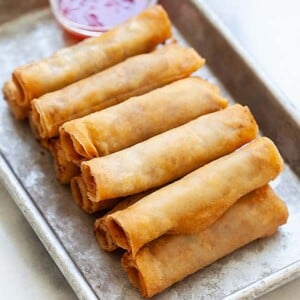
Lumpia
Ingredients
- 1 package (25 sheets) Lumpia wrappers, Chinese or Vietnamese spring roll wrappers meant for frying can be used.
- 2 lbs. (1kg) ground pork
- 5 cloves garlic, peeled and minced
- 1 inch (2.5cm) ginger, peeled and minced
- 3 tablespoons soy sauce
- 1/2 teaspoon chicken bouillon powder, optional
- 2 eggs, lightly beaten
- 1/2 teaspoon ground black pepper
- 6 oz. (175g) cabbage, thinly sliced
Instructions
- Using a serrated knife, cut the square lumpia wrappers in half so that you have two stacks of rectangular wrappers. Place a damp paper towel over the wrappers to keep them from drying out as you work.
- Combine the pork, cabbage, garlic, ginger, soy sauce, chicken bouillon powder (if using), eggs, and ground black pepper in a large bowl. Using your hands or a rubber spatula, mix the filling well so that the seasonings are evenly distributed.
- Place one of the rectangular wrappers vertically on your work surface with the short edge facing you. Place a heaping teaspoon of the filling on the wrapper, about half an inch from the edge closest to you. Grasp the bottom edge of the wrapper and roll it up and over the filling, continuing to roll until 2 inches of wrapper remain.
- Dip two fingers into a bowl of water, then moisten the last 2 inches (5 cm) of wrapper with your fingers. Finish rolling the lumpia, then rest it on its seam. Continue rolling with the rest of the filling and lumpia wrappers.Pro tip: Water is usually enough to seal the lumpia wrappers, but if that doesn’t work, you can use an egg wash.
- To cook the lumpia, fill a large frying pan with about 1/2-inch (1 cm) of vegetable oil. Heat the oil over medium-high heat. Gently place the lumpia into the hot oil and fry until golden brown on all sides, 3 to 5 minutes total. Serve hot with sweet and sour sauce or banana ketchup.Pro tip: If frying frozen rolls, it will take 1 to 2 minutes longer. You can also pop them in the air fryer at 400°F for 7 to 9 minutes, longer if using frozen.
Video
Notes
- I always make sure to thaw the wrappers properly so they don’t tear, and I keep them moist by covering them with a damp cloth while I work. For the filling, I finely chop the cabbage and mix it evenly with the ground pork.
- I like to practice wrapping with a small amount of filling first and use beaten egg to seal the edges, making sure the rolls stay tight during frying.
- When frying, I cook in batches over medium-high heat for that perfect golden crunch, or I bake them at 400°F (200°C) if I want a healthier option.
- For that extra crispy, non-oily texture, the air fryer is my go-to.
- If I’m making a big batch, I freeze the uncooked rolls in a single layer, then store them in freezer bags. When I’m ready to eat, I reheat them in the oven or air fryer to keep them crispy.
Nutrition
Nutrition information is automatically calculated, so should only be used as an approximation.
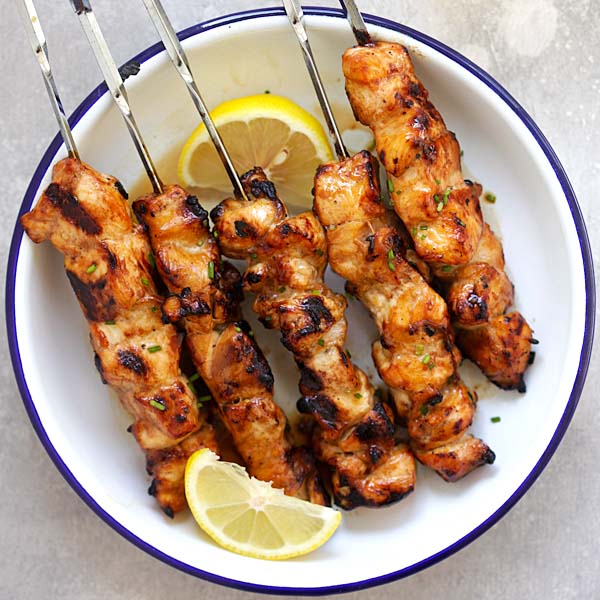
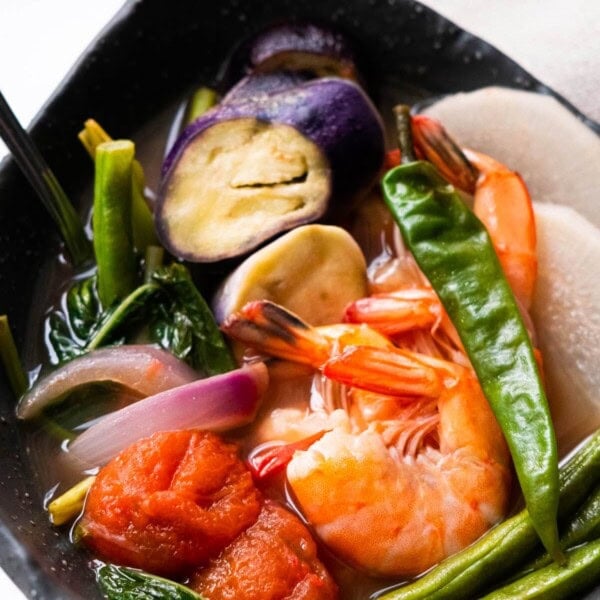
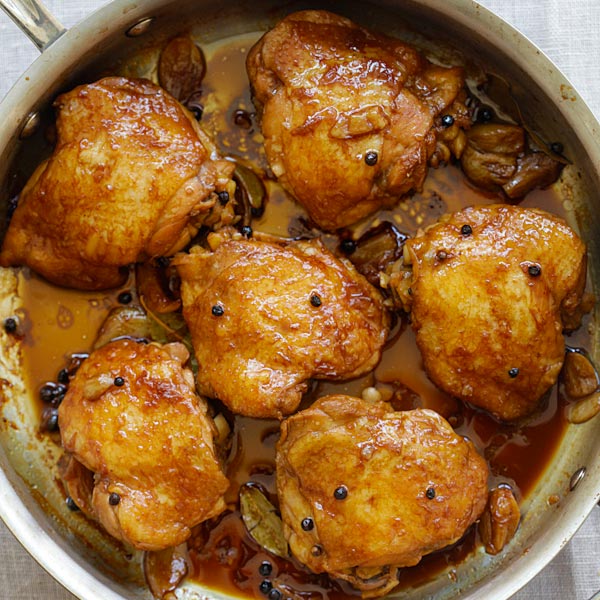
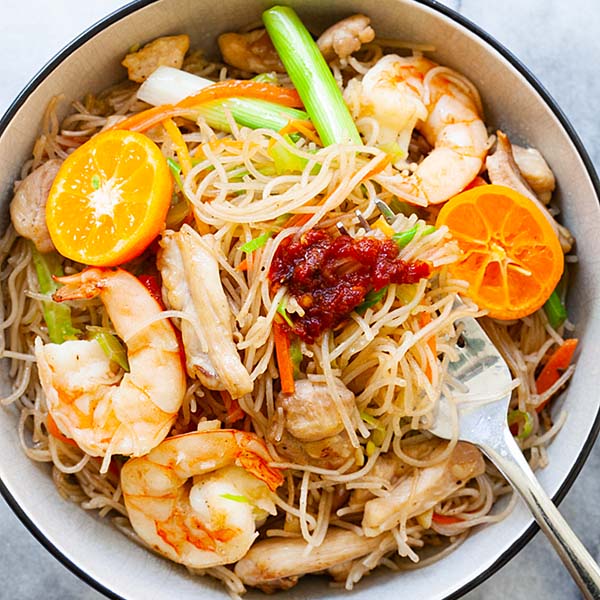






I just wanted to ask if I am making lumpia do I cook the ground pork or chicken first?
No.
I made it and it was delicious!
Can these be frozen? If so freeze before or after frying? Thank you
Yes you can freeze the lumpia after rolling. Just thaw to room temperature before deep frying.
Can I skip the ginger
Yes, you can omit the ginger.